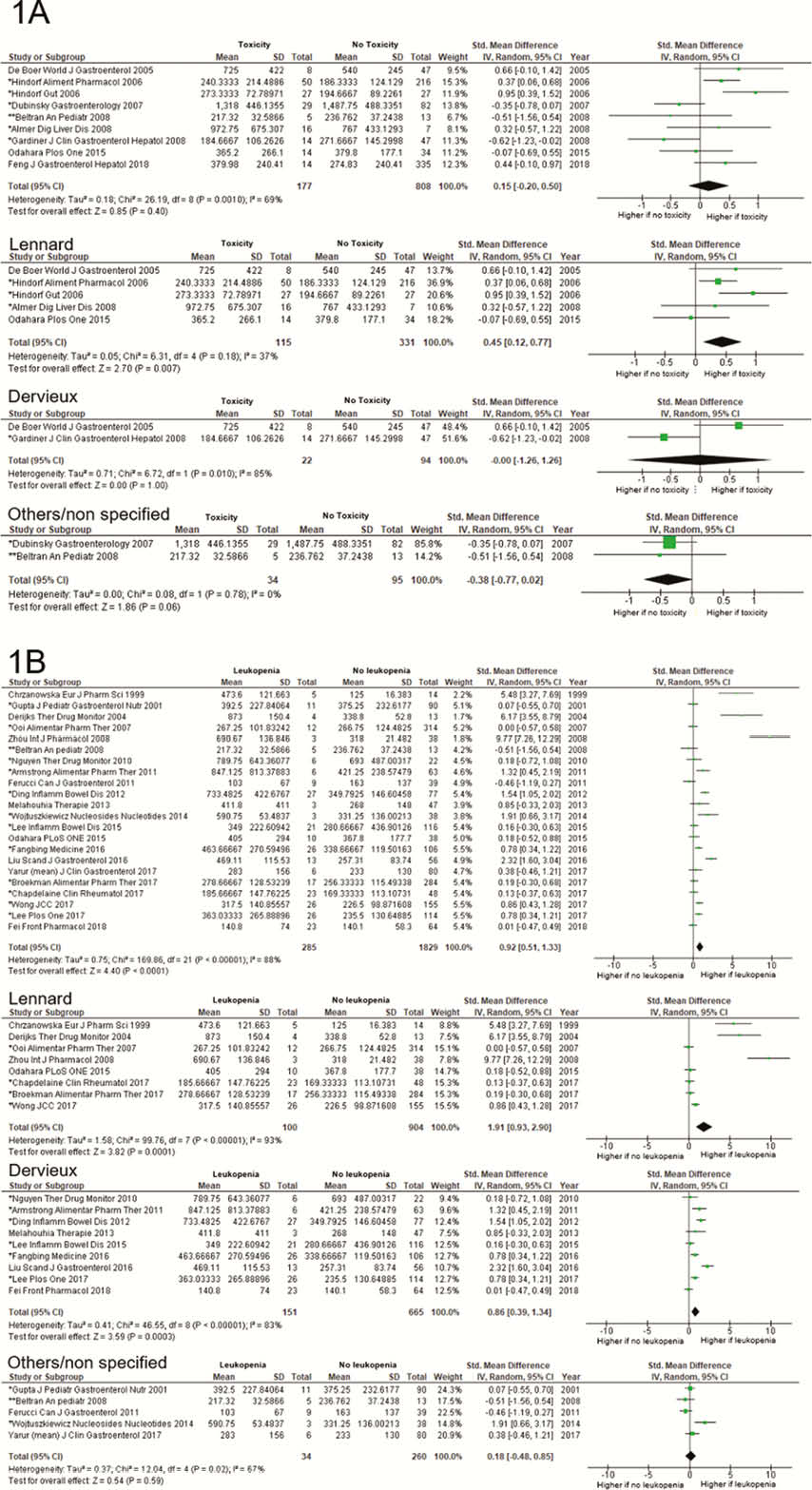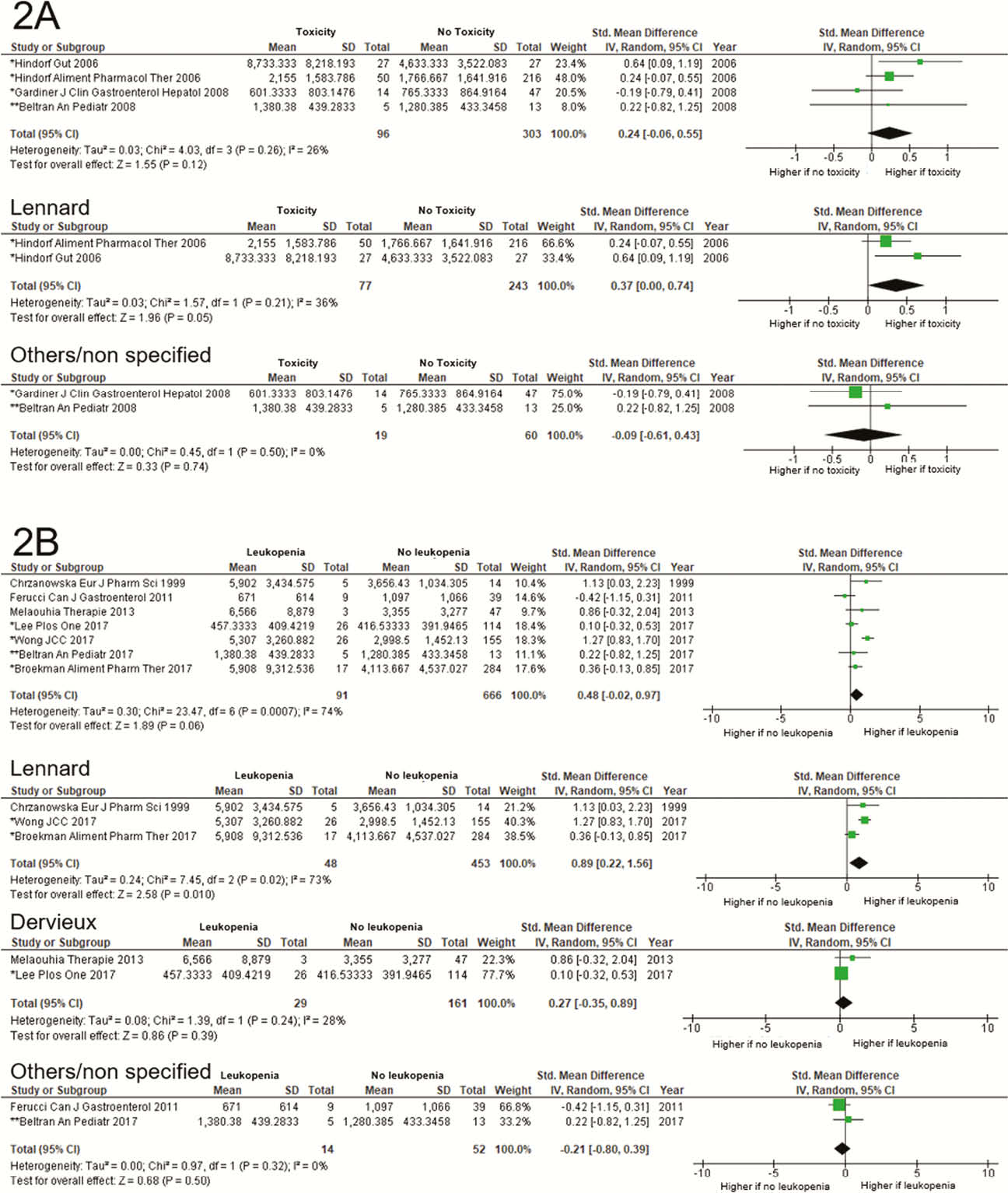P478 Thiopurines’ metabolites levels and drug toxicity: a systematic review and meta-analysis
P.C. Sousa1, M. Estevinho2, C.C. Dias3, D. Martins1, E. Cancela1, F. Pires1, C. Carvalho1, P. Ministro1, F. Magro2
1Department of Gastroenterology, Centro Hospitalar Tondela-Viseu, Viseu, Portugal, 2Department of Biomedicine, University of Porto, Oporto, Portugal, 3Faculty of Medicine of University of Porto, Unit of Pharmacology and Therapeutics, Oporto, Portugal
Background
Besides Inflammatory Bowel Disease, thiopurines are used in a broad range of clinical conditions. Even though therapeutic drug monitoring (TDM) is widely used with biologics, there are still many unanswered questions regarding TDM for thiopurines. This study aimed to establish a relationship between the levels of thiopurines’ metabolites and treatment toxicity.
Methods
Literature search was carried out in 3 databases (Pubmed, Web of Science and Scopus) following PRISMA guidelines. Studies evaluating the relationship between the levels of thiopurines’ metabolites and their toxicity (haematological and hepatoxicity, pancreatitis, intolerance and infection), regardless of the disease to which they were prescribed, were included.
Results
From the 16194 identified records 74 were eligible for further analysis. A meta-analysis of mean comparisons, correlations and odds ratio (OR) were performed. The levels of 6-thioguanine nucleotides (6-TGN) were significantly higher in patients with general toxicity and leukopenia when the Lennard method was used for quantification (Figure 1). Significant correlations were obtained between the 6-TGN levels and leucocytes (


Conclusion
These results reinforce that TDM may be used to prevent the occurrence of toxicity during thiopurines’ treatment. However, the cut-off values for this association may depend on the method used to measure metabolites’ levels.


